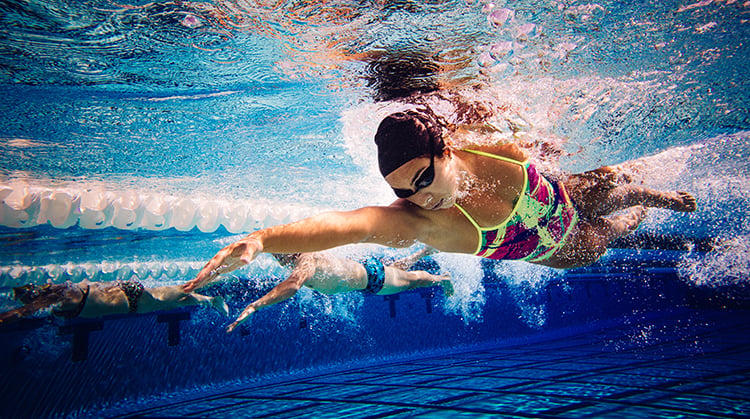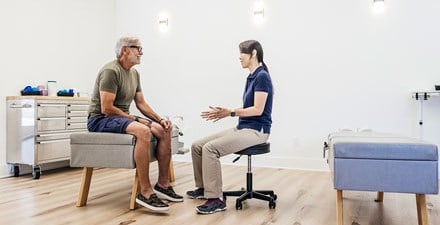
Swimming is a low-impact exercise that works almost all the muscles in the body. That's why many injured athletes turn to the pool to maintain fitness and rehabilitate an injury at the same time. It's also a healthy physical activity for people in their youth to older age.
But swimming is not without the possibility of an injury. Shoulder injuries are the most common injury in swimming. A proper swim stroke technique is crucial to injury prevention.
Here are five things to focus on to improve your swimming stroke and avoid injuries:
1. Bilateral Breathing
The ability to breathe comfortably on both sides is important while swimming the freestyle stroke. By changing sides, you are equalizing muscle activities and achieving symmetry. It also allows for smoother and more symmetrical strokes. With consistent practice, it will become more natural and lead to a more efficient stroke.
2. Posture
Your posture outside of the pool may affect your posture in the pool. For example, if you have tightness in the chest muscles or rounded shoulder posture, this may put you at greater risk for shoulder impingement. Shoulder impingement occurs when the tendons become pinched, irritated, and inflamed in the shoulder region. To minimize this risk while swimming, the shoulders should be back and the chest forward during a freestyle stroke. The position of the head while swimming should be looking forward and down, so the water will crest above the eyebrows.
3. Kick
The kick should originate from the hips. In other words, "kick your legs; don’t kick your feet.” There should be a slight bend in your knee at all times. Your toes will naturally point.
4. Catch and Pull
The "catch" is when the hand enters the water. You are essentially catching the water, with the third or fourth finger leading the arm with your wrist slightly bent at the line of your goggles. If the thumb enters the water first, it can cause the shoulder to internally rotate, which may lead to a shoulder injury.
The "pull" is the sweeping phase when the arm pulls through the water to move the body forward. The hand and arm should enter the water as an extension of the shoulder. If the arm crosses over the midline or is too wide, it may cause a shoulder injury.
5. Body Rotation
Your body should rotate as if your spinal column is a skewer. As the right arm enters the water, the body should rotate slightly toward the right, and vice versa. A flat body posture also can lead to shoulder injury. Body rotation also facilitates bilateral breathing.
In addition to the above tips, proper warm-up and stretching exercises are important to reduce injury during swim sessions. Stretching exercise as part of the warm-up helps to improve flexibility and prepare your muscles for this activity. Strength training to the shoulder, particularly the rotator cuff, scapular, and core muscles, will enable you to have a more powerful and efficient stroke. Once you are proficient in swimming freestyle, you can learn other strokes. Alternating different strokes prevents repetitive motion that can lead to overuse injuries.
If you do experience a shoulder injury, a physical therapist can help. Physical therapists are movement experts. They improve quality of life through hands-on care, patient education, and prescribed movement. You can contact a physical therapist directly for an evaluation. To find a physical therapist in your area, visit Find a PT.


